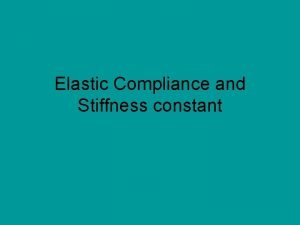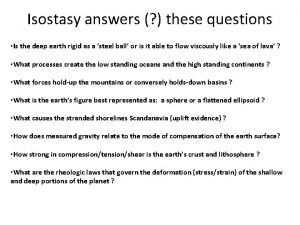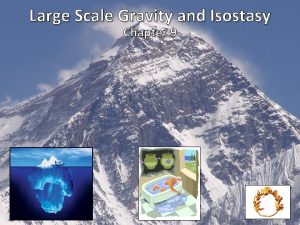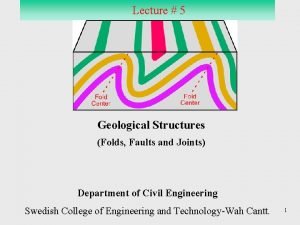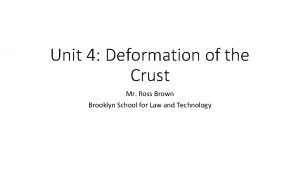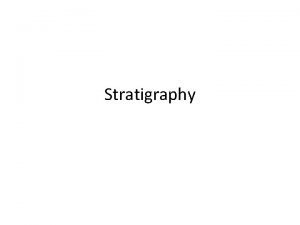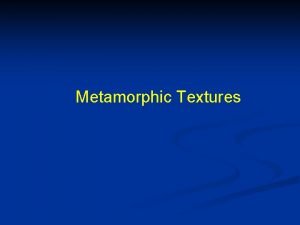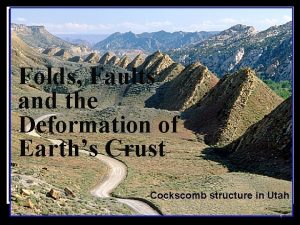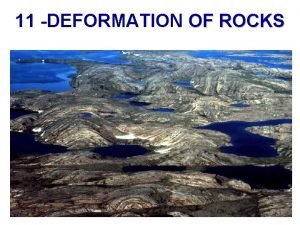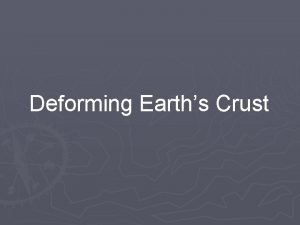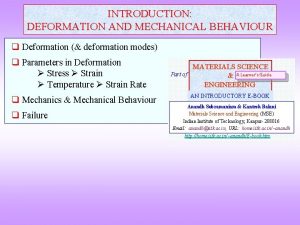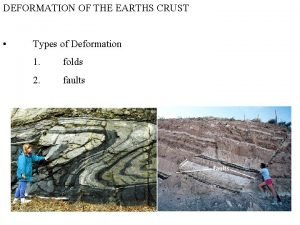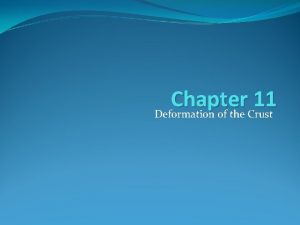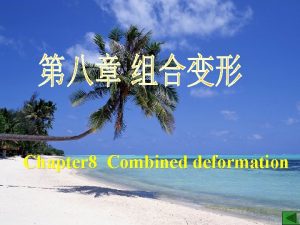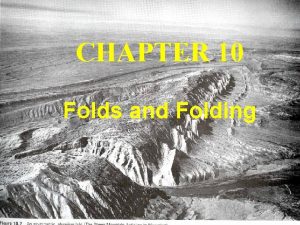Fault and Folds Deformation of the Crust Isostasy













- Slides: 13

Fault and Folds: Deformation of the Crust

Isostasy (A) When gravitational and buoyant forces are equal, a state of isostasy exists. (B) As erosion wears away the crust, the lithosphere becomes lighter and rises. (C) As erosion continues, the isostatic adjustment also continues.

Isostasy • Subsidence occurs when sediments are quickly deposited and compacted. • Glaciers also change Isostasy.

Faults • Where two tectonic plates or pieces of Earth’s crust slide past each other. • Tension or pressure build up along fault zones • When pressure gets to high, the fault slips. • Faults slipping cause EARTHQUAKES!!!

Faults of Virginia

Types of Faults • 3 Types: Normal Fault, Reverse (thrust) fault, and Transform (Strike-Slip) Fault.

Normal Fault • Tension or pulling apart causes headwall (hanging wall) to slide down footwall. • Crust is lengthened. • Divergent boundary

Reverse or Thrust Fault • Headwall is thrust up over the footwall due to compression. • Crust is shortened. • Convergent Boundary

Transform (Strike-Slip) Fault • One plate slides past the other. No headwall or footwall. • Example: San Andreas Fault • No crust shortening or lengthening. • Shearing (tearing) is present. • Transform Boundary (it transforms the crust by folding it).

What kind of fault is this?

What kind of fault is this?

What kind of fault is this?

Folds • Faulting often causes folding of rock to form Mountains. • The Appalachian Mountains in Virginia are faulted and folded. • 2 Types of Folds: Anticlines and Synclines
 True vocal folds and false vocal folds
True vocal folds and false vocal folds Stress strain curve toughness
Stress strain curve toughness Isostasy
Isostasy Pratt hypothesis formula
Pratt hypothesis formula Isostasy animation
Isostasy animation Faults and folds
Faults and folds Anterior and posterior axillary fold
Anterior and posterior axillary fold Make your own folds and faults
Make your own folds and faults Thrust fault
Thrust fault Nasolabial lines
Nasolabial lines Mantle earth meaning
Mantle earth meaning Steno's laws of stratigraphy
Steno's laws of stratigraphy Gastric folds
Gastric folds Decussate texture
Decussate texture

